Elizabeth Diller is an architect, a professor of architectural design at Princeton University, a member of the UN Council on Urban Initiatives, and a co-founder of Diller Scofidio + Renfro.
Born to a secular Jewish family in Poland in 1954, Diller’s parents were Holocaust survivors, a reality that has impacted her ‘sensitivity’ towards different topics. Diller and her family migrated to the United States in 1959, settling down in Manhattan, New York. As immigrants, they faced numerous challenges, including language barriers and financial instability; however, by the time Diller was in 3rd grade, she found herself adapting to her environment and developed an interest in art.
The rise of activism and feminist movements in NYC when Diller was in high school triggered a creative atmosphere that further influenced her political consciousness, creativity, and interest in art.
Diller joined Cooper Union’s Art School to pursue her undergraduate education. Back then, she found herself distant from architecture and was drawn to filmmaking, photography, and visual arts. However, the architecture department at Cooper Union offered a course called “Architectonics,” which appealed to Diller. This course, taught by John Hejduk, made Diller realize that architecture might be for her. Cooper Union’s approach was one that was anti-practice; architecture was an intellectual pursuit interconnected with art and literature.
This new perception of architecture, one that was far away from politics and practical considerations, liberated Diller and made her acknowledge that she could adopt a critical approach to architecture, where she could study space and focus on the togetherness of two —and three-dimensionality.
Diller transferred to architecture, where she met Ricardo Scofidio, her instructor at the time. After she graduated, they got married and founded Diller Scofidio + Renfro. The firm spent many years away from practice, working independently and adopting an experimental approach that permitted them to explore and work across media, art, and space. This allowed them to escape the limitations of practice in architecture and push the boundaries of the traditional perception of the discipline whilst addressing issues revolving around space in its different forms and natures.
Diller Scofidio + Renfro eventually moved on to the world of practice yet attempted to stay true to the significance of their vision and ideas rather than reshaping their concept to fit in the box of practice’s limitations and standards. Their works are characterized by challenging assumptions about space and its conventions.
Diller believes that the architect’s vision for a project is to be treated like a compulsion, and she had to spend most of her time convincing clients of her vision. Diller described this process as 1% drawing and designing and the other 99% as marketing and convincing others of your ideas, which requires an equal amount of creativity compared to the latter. This drove Diller to be daring with her thoughts and aspirations for a project, approaching it with a sort of naivety that pushes creativity and disregards execution considerations, which are to be figured out later. She describes the process as “jumping off a cliff without a parachute and then figuring out how to build something for a smooth landing.” Diller’s approach has also permitted her to deal with projects of varying scales, ranging from urban-scale projects to smaller artworks and installations. However, her firm has mostly dealt with museums and cultural projects due to their initial interest in art.
This daring approach is not as disconnected from reality as one may first expect. Diller is fond of technology and considers it an indispensable tool for the execution of a project. Diller Scofidio + Renfro’s works are characterized by unconventional and striking applications of technology and computational methods, especially in the 2000s, earning its founders a place on Time Magazine’s “100 Most Influential People” and the first MacArthur Foundation fellowship in architecture.
Elizabeth Diller’s DS+R has played a pivotal role in shaping New York with its highly influential, revolutionary projects, and its thought-provoking work has extended beyond its borders.
Here are some of Elizabeth Diller of DS+R’s most remarkable works:
Blur Building
Location: Swiss Expo 2002, Yverdon-les-Bains, Switzerland
Year: 2002
DS+R’s idea for this pavilion design was to utilize water from Lake Neuchâtel as a building material rather than a context. With technological advancement, high-definition visual material prevailed, promoting an “insatiable” desire for higher-quality visuals. This reality pushed DS+R to introduce a contrasting blurry structure that defies the orthodoxy of the pixel-per-inch mindset. They envisioned a cloud floating obscurely over the lake, emphasizing the concept of blurriness.
Their winning proposal had to be executed, and it was only after they had delved into the project that they realized that it could be deadly. Blur Building was meant to utilize water from the lake in the form of water droplets through a process called atomization. The lake carried all sorts of bacteria and pollutants that, when inhaled, could cause diseases, potentially intoxicating the entire population visiting the Swiss Expo.
The project was realized with the help of numerous engineers, experts, and expensive water filters to deal with the health hazards of the lake’s water. It was pumped, filtered, and then shot through 35,000 high-pressure fog nozzles, producing a fine mist.
A weather system linked to the central computer would study the weather conditions and control the nozzles and water pressure accordingly to produce the desired effect. The produced cloud floated over a structure that was almost the size of a football field, carried over the water by four columns.
The result was “formless, featureless, depthless, scaleless, massless, surfaceless, and dimensionless.” Nothing but the whiteness of the cloud could be seen, and only the sound of the nozzles was heard. Diller describes it as a “spectacular anti-spectacle,” and although she had to do a lot of negotiations with the Swiss government to push for the project, it ended up receiving so much admiration and was honored with a Blur-themed chocolate bar.
The High Line
Location: New York, United States
Year: Opened in 2009 and completed in 2014 in 3 phases
The High Line is the result of a competition targeting the transformation of an elevated railroad in Manhattan. The railroad extended and passed through different spaces, capturing unique views and stories of the city. Abandoned, different shrubs sprouted, creating unique ecosystems and landscapes. The biodiversity was a result of the interaction of nature with its surroundings; different spaces with different lighting and weather conditions triggered different natural growth that inspired DS+R to envision the railroad as an urban park.
Attempting to preserve the biodiversity of the railroad and its micro-climates, DS+R adopted a unique paving strategy utilizing pre-cast concrete planks with open joint connections to “encourage emergent growth like wild grass through cracks in the sidewalk.” This strategy created a continuous pathway with varying gradients of soft and hardscape and diverse vegetation. This transformed the railway into a sustainable public space and represents a successful example of adaptive reuse.
The High Line attracted numerous surrounding projects, further stimulating the diversity and uniqueness of its overall context. The park witnesses different forms of public use as it has provided the city with a rich form of public intimate social space.
The Shed
Location: New York, United States
Design Proposal: 2008
Opening Year: 2019
On the edges of the High Line, 21,000 ft2 were reserved for a cultural project proposal.
DS+R, taking into consideration the downturn of the economy, attempted to create a model of cultural entrepreneurship that operates independently of standard fundraising models whilst addressing the need for cross-disciplinary spaces that combine the arts and industry in New York.
Aiming for a “flexible, scalable, unbranded, and self-sustainable” design, the Shed was designed with 8 levels, 2 of which are a large gallery space that can accommodate different functions, and the other levels serve as rehearsal spaces, creative labs, and event spaces.
The main iconic aspect of the Shed is its outer shell that glides from the building itself towards its plaza, transforming it into an adaptable, multi-purpose, and weather-protected space. It utilizes a steel diagrid frame cladded with translucent lightweight ETFE panels.
The shell operates with a kinetic railway-inspired system and adopts gantry crane technology to utilize the shell for service functions and different programs as needed. The Shed can be adapted for screenings, concerts, exhibitions, and shows, with only 5 minutes needed to deploy the shell. Diller perceives this project as paradigm-shifting since nothing like it ever existed at the time.
15 Hudson Yards
Location: New York, United States
Completion: 2018
While working on The Shed, DS+R was offered the opportunity to work on an adjacent residential tower. While initially reluctant due to their firm’s focus on more cultural projects, DS+R realized that if they wanted a proper neighbor to The Shed, there was no better option than to do it themselves.
DS+R’s familiarity with the area’s context, especially with the High Line and The Shed, and their concern about The Shed’s neighbor drove them to find a way to promote a dialogue between The Shed and the 15 Hudson Yards. This was achieved by integrating the service spaces of The Shed with the skyscraper’s lower floors and utilizing them for The Shed’s shell movement.
Upon trading the tower’s lower floors for The Shed, the developer was instead given the right to build upper floors, which are more valuable and desirable.
The 15 Hudson Yards’ most notable architectural feature is its smooth transition from the rectangular Manhattan grid at the base to a curving cloverleaf shape at the top, with each quadrant positioned to optimize panoramic skyline views.
The Broad
Location: Los Angeles, United States
Opening Year: 2015
The Broad is a contemporary art museum that aims to make contemporary art as accessible as possible through exhibitions and art lending programs. The museum, with its free-of-charge admission, is home to more than 2,000 pieces of artwork.
DS+R utilized The Broad’s main functions of the museum, which are represented in the design as the “veil-and-vault.” The “vault,” made of 36 million pounds of concrete, serves as a mass for collection storage while providing the museum with a unique circulation experience where visitors move through smoothly carved opaque spaces. The lobby is formed by further carving the mass to create an entrance, and the top surface of the mass is used as the exhibition space. To provide a sensation of depth and the richness of the collection, the “vault” has viewing windows that allow one to peek into its interior.
The “vault” is enveloped by the “veil,” which covers the exhibition space. Characterized by its honeycomb-like structure, it allows diffused natural light over the large, spacious, and column-free gallery. It is composed of “2,500 glass fiber reinforced concrete panels and 650 tons of steel”.
Institute of Contemporary Art
Location: Boston, United States
Commission: 2003
Completion: 2006
The Institute of Contemporary Art happens to be the “first museum to be built in Boston in 100 years” and DS+R’s first architectural project in the U.S. The museum was selected for an expansion as part of the Fan Pier Waterfront development.
Although a museum’s general focus is on its collection and exhibition, DS+R acknowledged that the site demands the museum to interact and be part of the exterior.
This was achieved by the museum’s iconic cantilevered gallery, from which a mediatheque is suspended at an angle that provides a view only to the sea. The museum is integrated with the Harbor Walk, a public walkway that is connected to an open-air grandstand and shaded by the gallery. Furthermore, the shaded entrance, the transparent glass elevator, the panoramic view at crossovers, and the transparency in the theater all provide different perceptions of the sea.
The building, with its galleries, workshops, offices, restaurant, bookstore, and theater, forms a hybrid interactive civic building, providing a reflective atmosphere for appreciating and enjoying art.
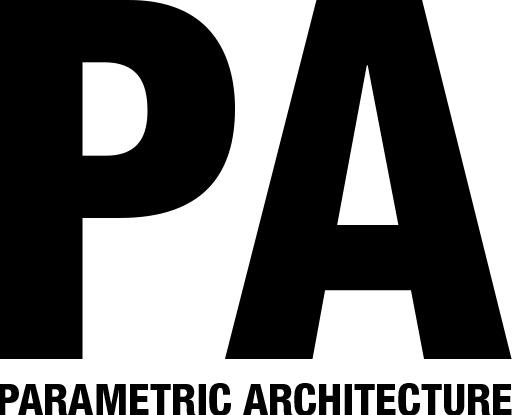




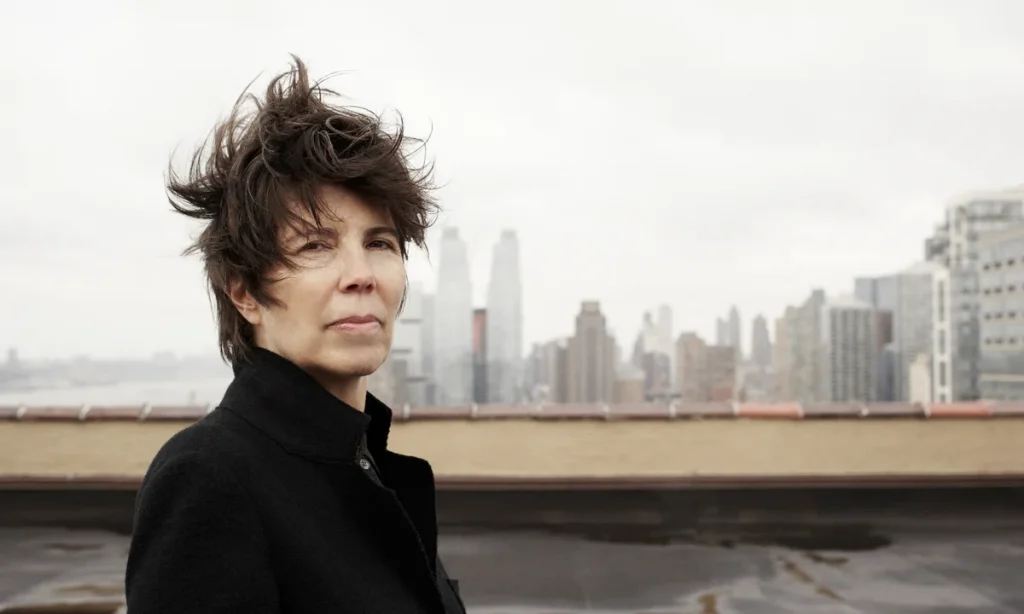
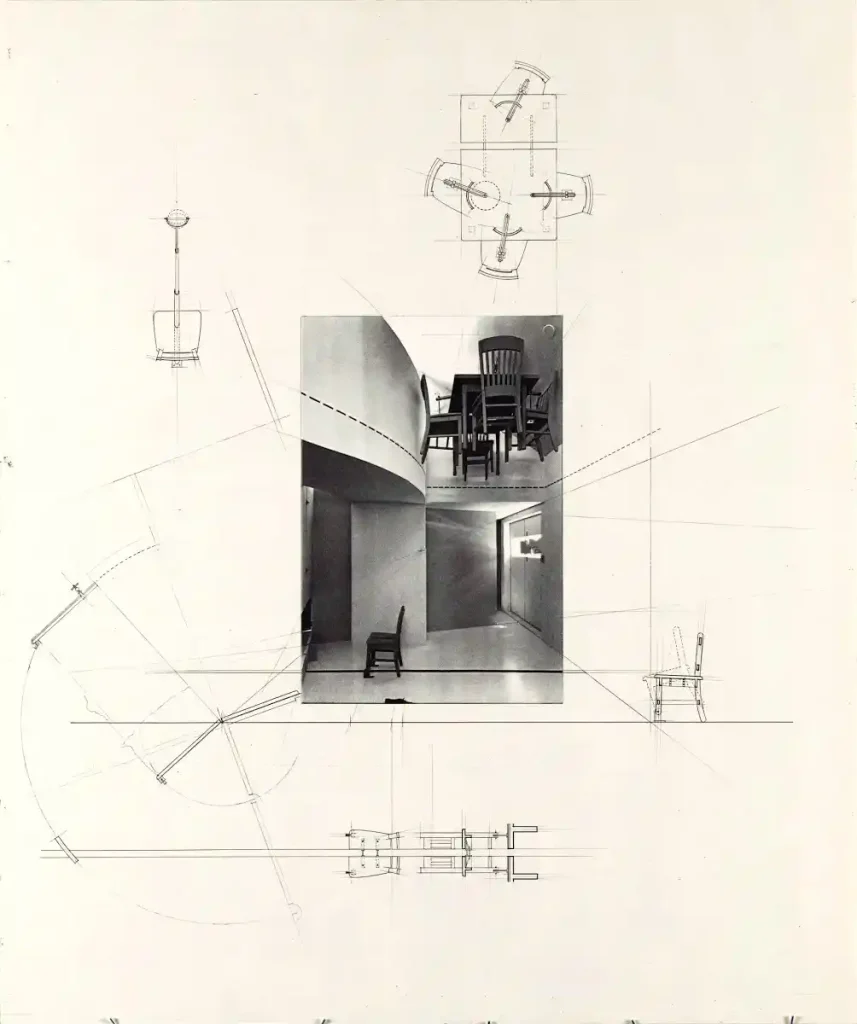
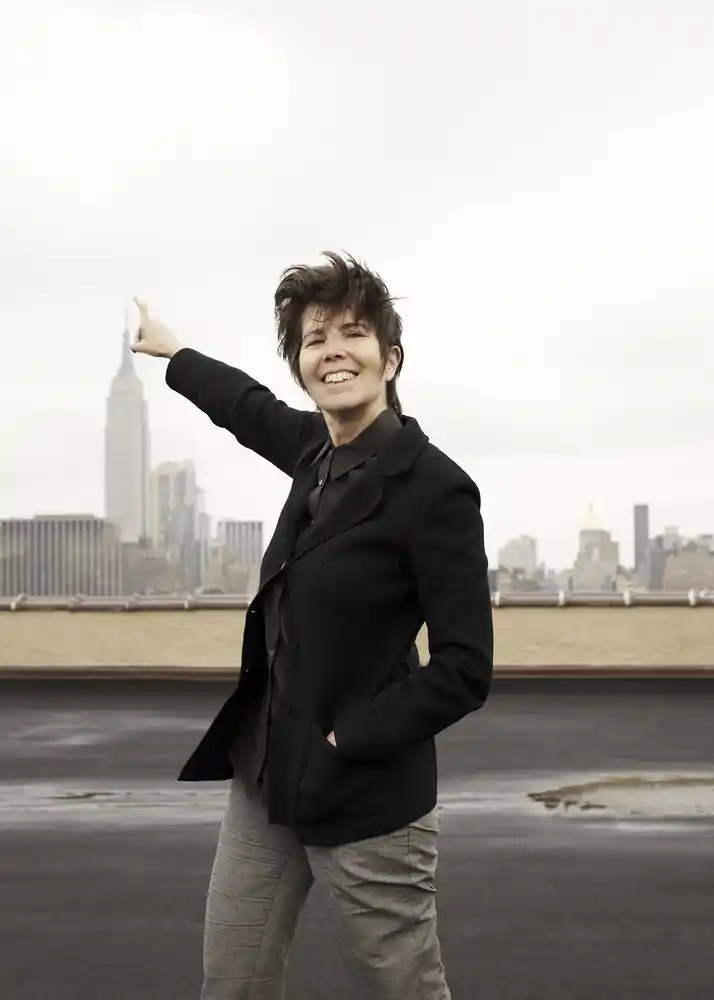
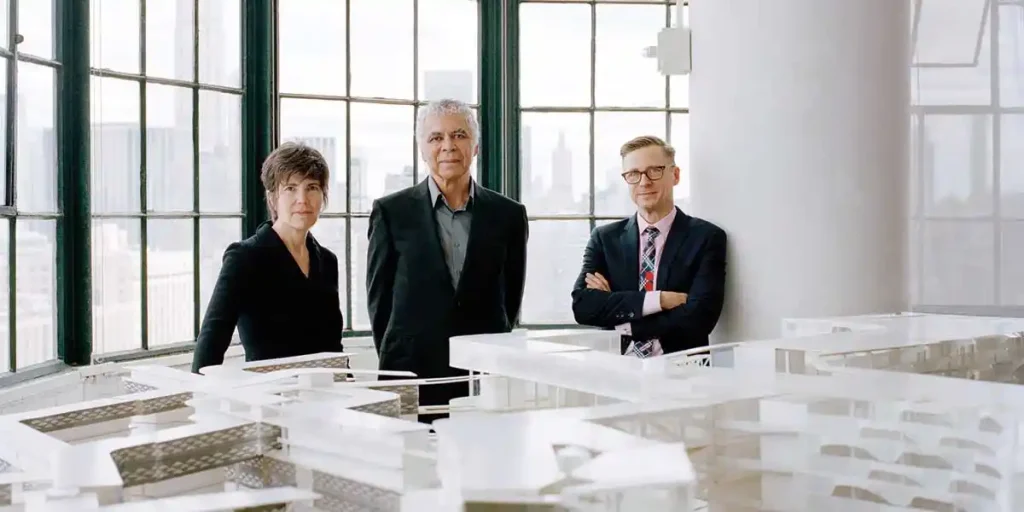
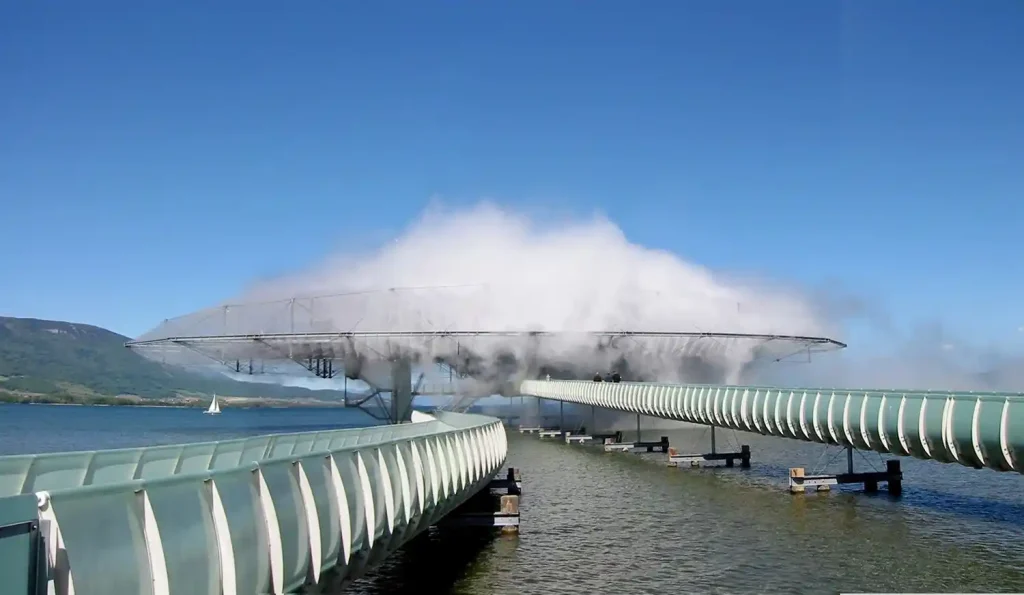
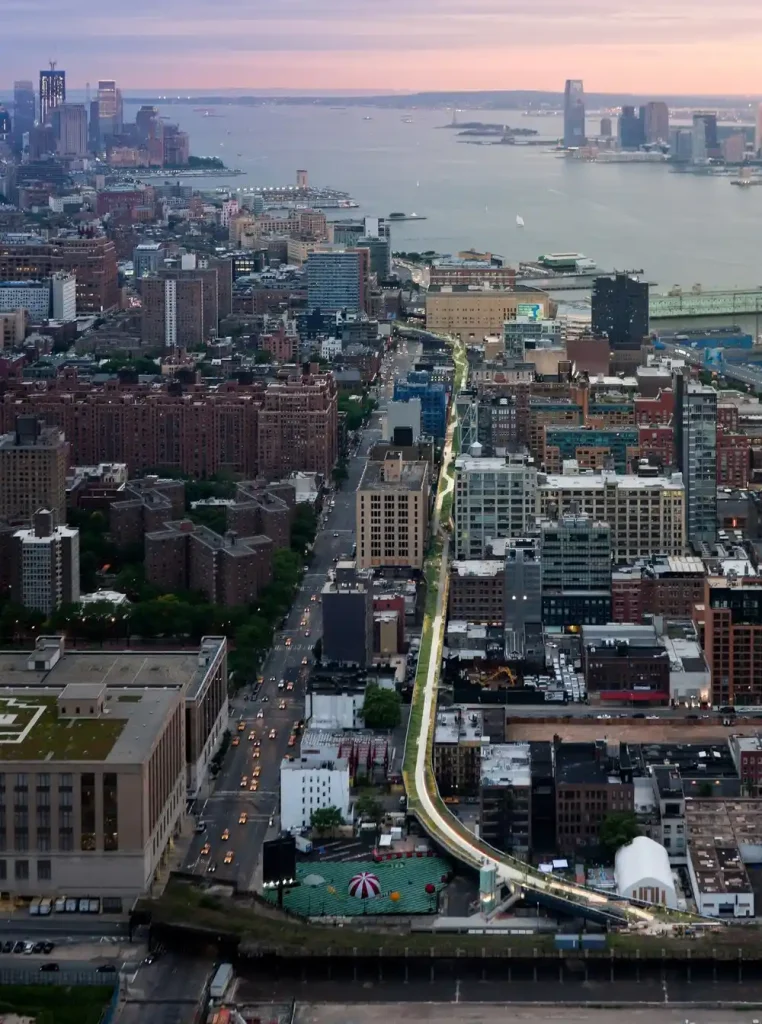
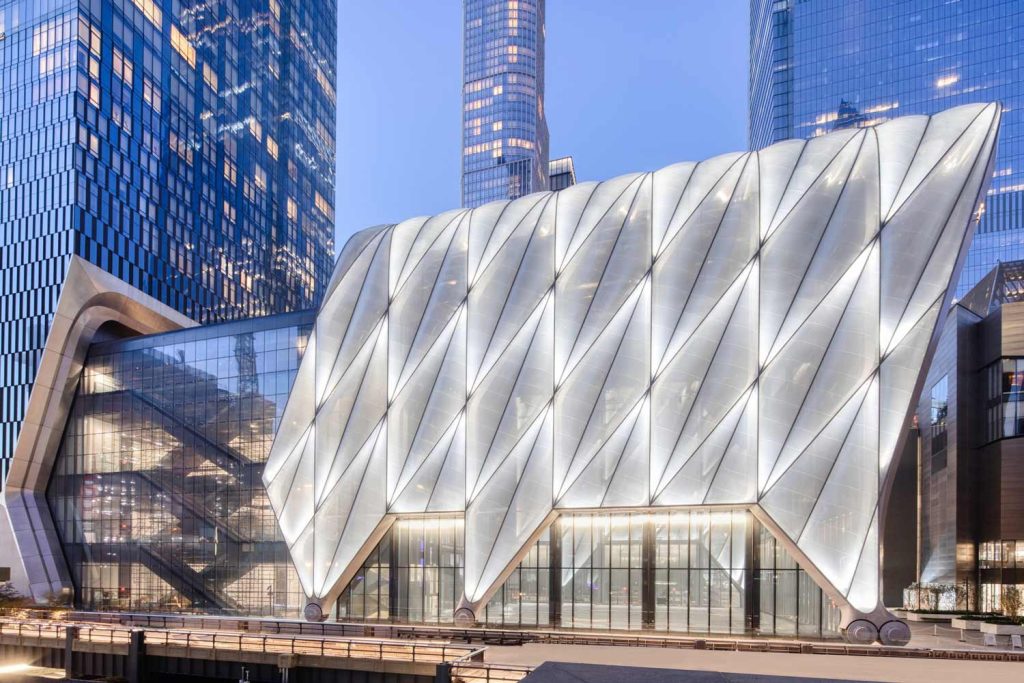
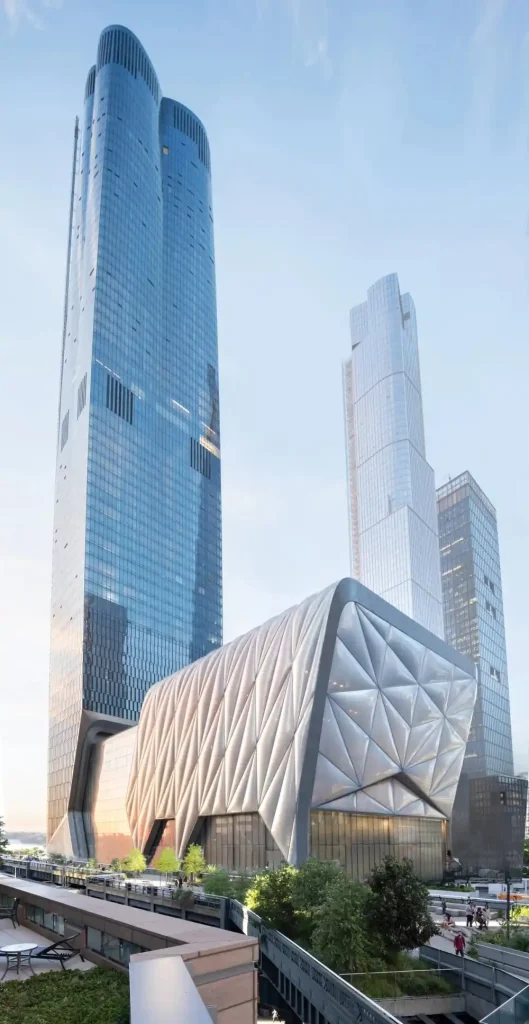
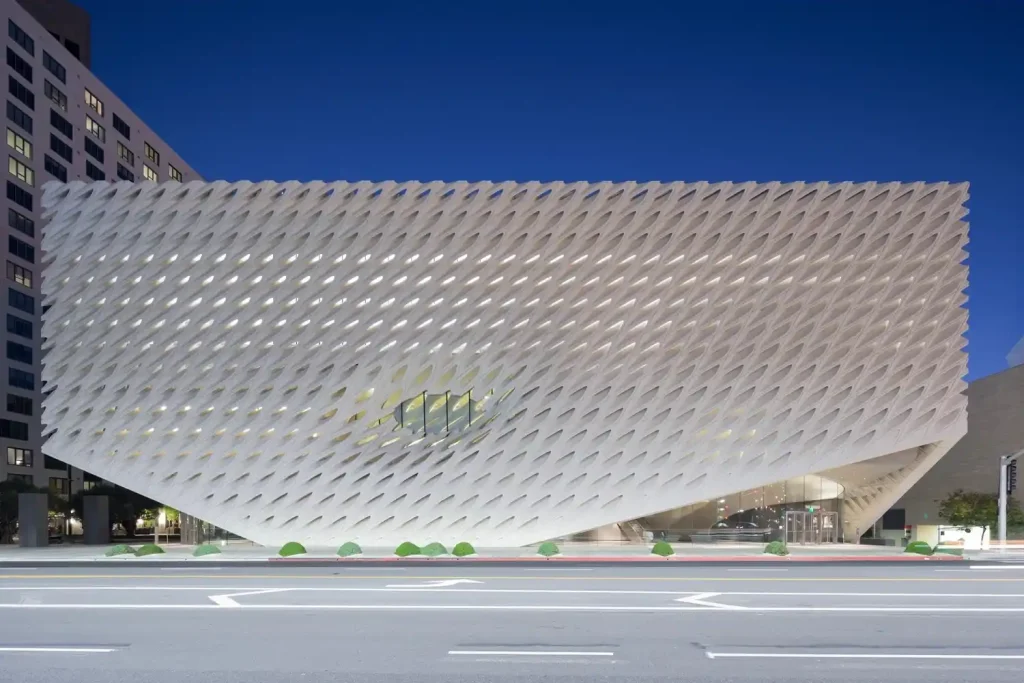
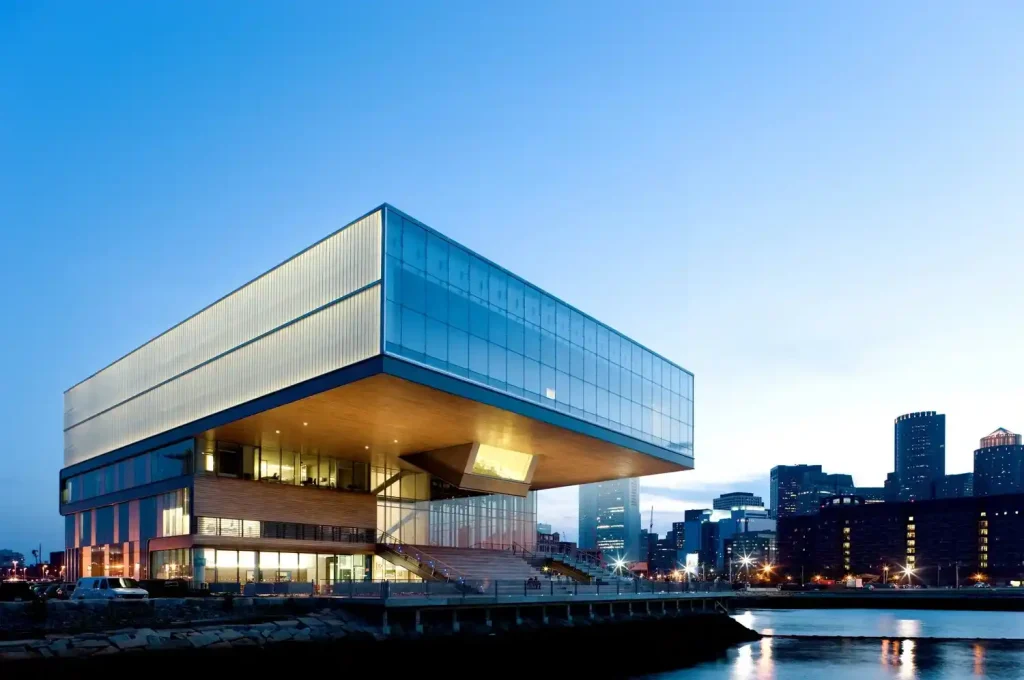


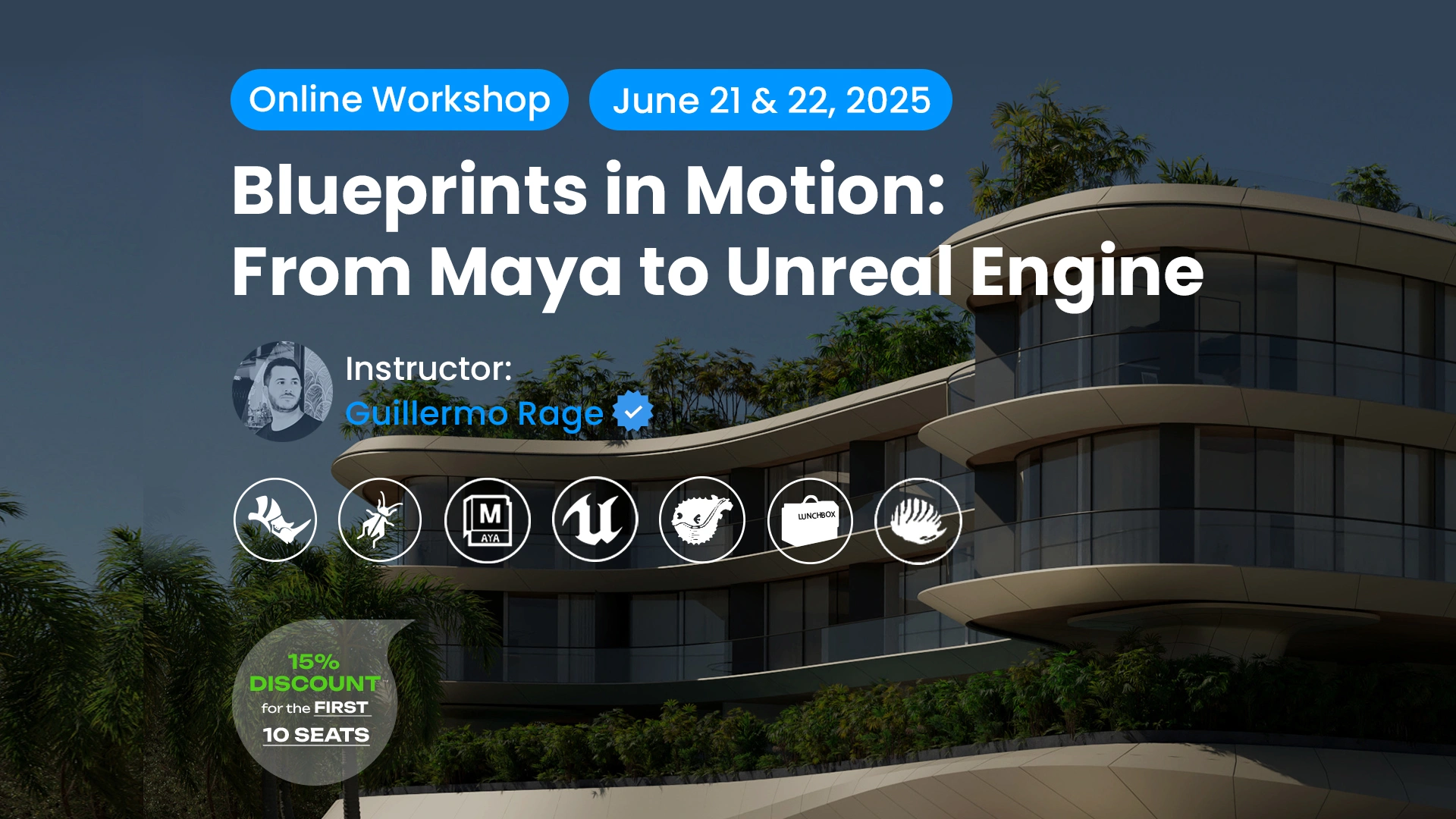

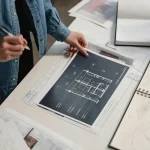

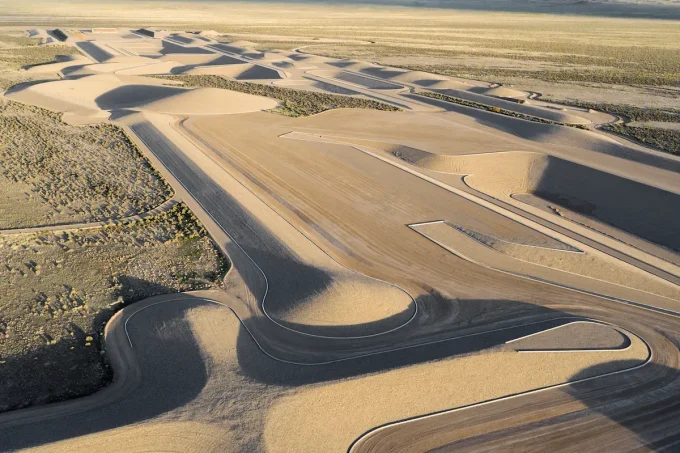







Leave a comment